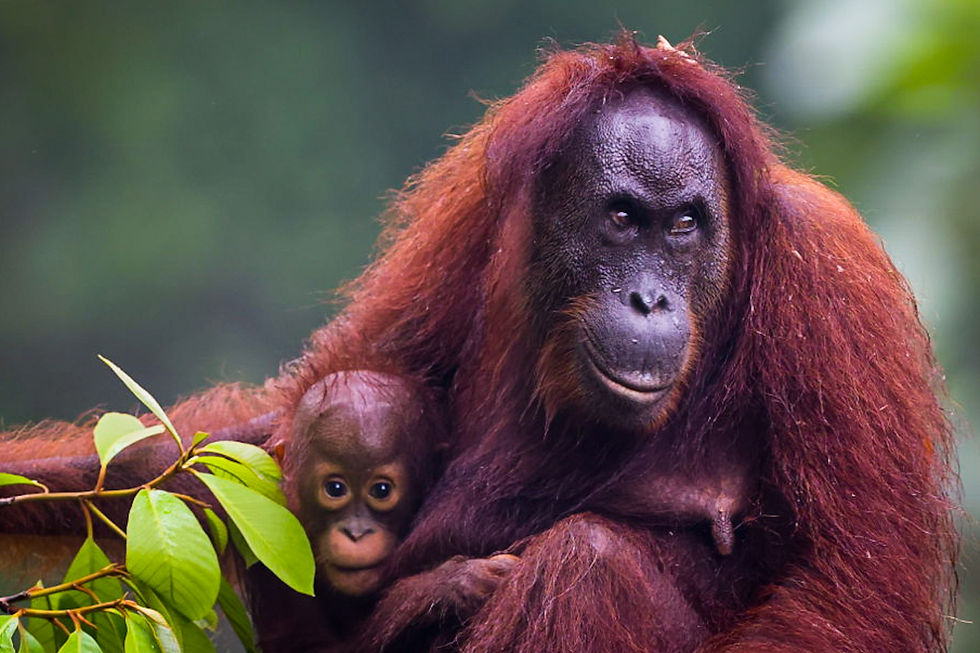Mastering Autofocus in Wildlife Photography: Tips and Techniques
- Paul Anderson
- Dec 12, 2024
- 4 min read

Imagine capturing that perfect wildlife moment—an eagle diving for a fish, a cheetah mid-chase, or a bird in flight—but your camera’s autofocus fails you. The difference between an epic shot and a missed opportunity? Practice.
Introduction
Hi there! I’m Paul Anderson, a wildlife photographer passionate about capturing the beauty of the natural world. I’ve traveled the globe photographing incredible wildlife, from the jungles of Borneo to the vibrant ecosystems of Costa Rica. I also guide workshops to help aspiring photographers enhance their skills and connect with nature through their lenses. Today, I want to share why mastering autofocus and consistent practice is your ultimate secret weapon in wildlife photography.
The Importance of Practice
Wildlife photography isn’t about luck; it’s about preparation. Just this morning at Ocala’s Recharge Park, I dedicated 90 minutes to observing snowy egrets. This was an excellent opportunity to practice my skills as these elegant white birds engaged in their captivating fishing routines.
The Morning Shoot: Snowy Egrets in Action
The snowy egrets followed a predictable pattern along a shallow water channel:
They slowly waded through the water.
Suddenly darted their heads underwater.
Quickly lifted out with small fish or aquatic prey.
Took short, quick flights between hunting spots.
My specific goal was to capture two critical moments:
Birds in Flight: Tracking these agile birds as they moved.
Underwater Head Dip: Nailing that split-second moment when their head breaks the water's surface.
I used continuous autofocus (AF-C) mode to keep up with their movements and selected single-shot autofocus (AF-S) for stationary moments. I practiced quick subject acquisition and tracking while experimenting with shutter speeds ranging from 1/1600 to 1/2500 seconds.

Learning Insights
This focused practice session revealed several important lessons:
The significance of anticipating bird movements.
Developing muscle memory for quick camera adjustments.
Gaining insight into subtle flight and hunting patterns.
Building confidence in tracking fast, unpredictable subjects.
Key Takeaway: Targeted Practice
These 90 minutes weren't just about taking photos; they were a purposeful exercise in enhancing my wildlife photography techniques. Photographers should dedicate specific days to targeted practice focused on particular techniques and conditions.
Why Targeted Practice Matters
Refinement of Skills: Concentrating on one aspect of photography—whether it’s mastering autofocus or perfecting composition—allows you to refine your skills more effectively than during general shooting sessions.
Adaptation to Conditions: Wildlife photography often involves unpredictable elements like changing light or weather conditions. Planning practice sessions around specific conditions helps you learn how to adapt your settings and techniques.
Building Confidence: Targeted practice allows you to focus on areas where you may feel less confident. If you're struggling with tracking fast-moving subjects, dedicate a session solely to that challenge.
Setting Goals: Before heading out, set clear goals for your practice session. Whether it's capturing birds in flight or experimenting with low-angle shots, having a specific target will keep you focused and motivated.
Tracking Progress: Engaging in targeted practice helps you track your progress over time, allowing for continuous growth as a photographer.

By incorporating these focused practice sessions into your routine, you'll enhance your technical skills and develop a deeper understanding of wildlife behavior.
Key Autofocus Tips
Let’s dive deeper into autofocus, which is crucial for capturing sharp images of fast-moving subjects:
Continuous Autofocus (AF-C): This mode continuously adjusts focus as your subject moves, ensuring sharp images even when animals are darting around.
Single-Shot Autofocus (AF-S): This mode locks focus on stationary subjects, which is useful for still wildlife or when you want to focus and recompose your shot.
Back-Button Focus: Assign autofocus to a button on the back of your camera instead of the shutter button. This allows you to maintain focus without having the camera refocus when you press the shutter.
Eye Detection Autofocus: This advanced technology can detect and track the eyes of animals, improving accuracy even in challenging conditions.
By understanding and utilizing these various autofocus modes, wildlife photographers can adapt quickly to changing situations, maximizing their chances of capturing sharp images of animals in their natural habitats.
The Perfect Training Ground
Local parks, wetlands, and areas like duck ponds are ideal for practice. They provide opportunities for wildlife photographers to hone their skills. Whether at a local pond or a city park, these environments offer valuable experiences that can enhance your photography:
Predictable Wildlife Movements: Many common birds exhibit consistent behaviors that allow you to anticipate actions and be ready to capture stunning images.
Diverse Subject Matter: While you may not be there to photograph rare wildlife, engaging with common birds allows you to practice different techniques and styles of photography.
Accessible Locations: Most towns have parks that are easy to access, providing a peaceful environment where you can focus on your craft without venturing far from home.

It's important to remember that photographing common birds is perfectly acceptable. It can be rewarding and helps improve your skills without the pressure of capturing something rare. Embrace the learning process and enjoy each outing as an opportunity to refine your craft.
Conclusion
Remember, the extraordinary shots you admire weren’t captured by chance—they were earned through relentless practice. Your camera is your instrument, and mastering autofocus is how you compose your visible masterpiece. So get out there, experiment with different techniques, and let every click bring you closer to perfection!
Thank you for joining me today! If you enjoyed this post, please like this article and subscribe for more wildlife photography tips. You can also follow me on Instagram at [your Instagram handle] for behind-the-scenes content and updates!
For more insights on wildlife photography techniques, check out my other blog posts:
For more tips and resources on wildlife photography, visit my website at Paul Anderson Photography.






Comentarios